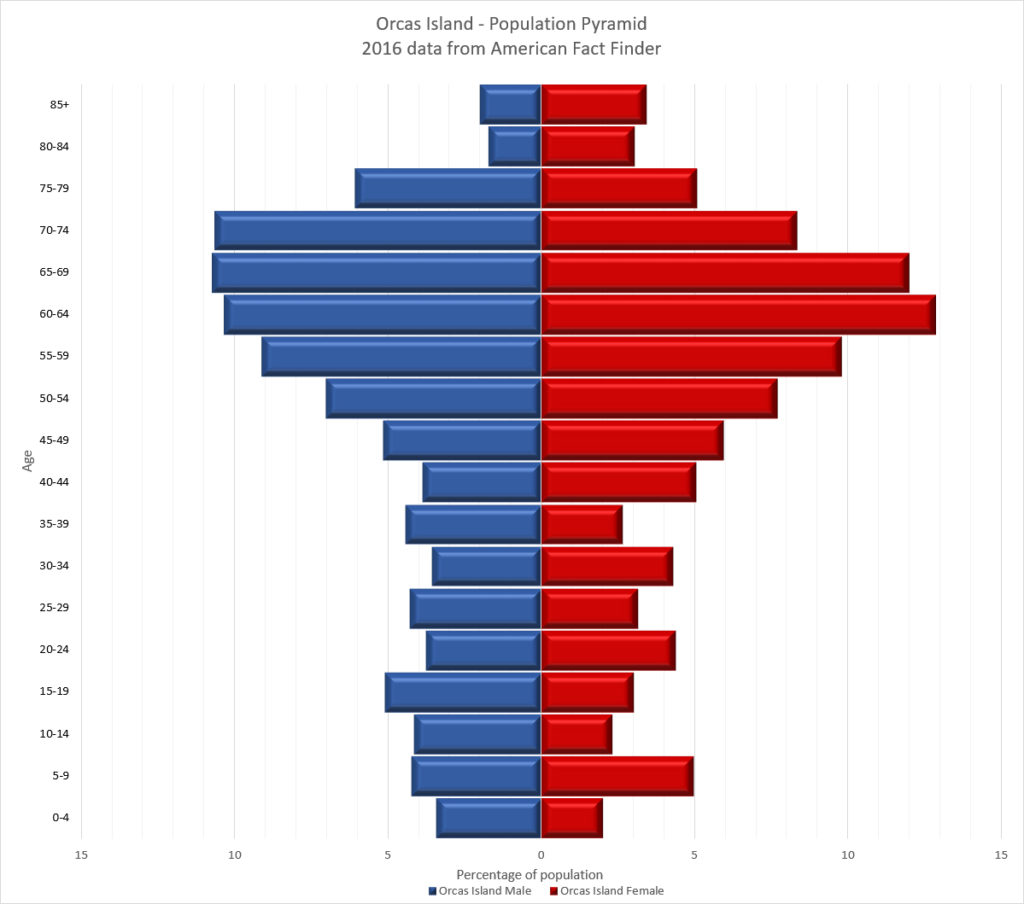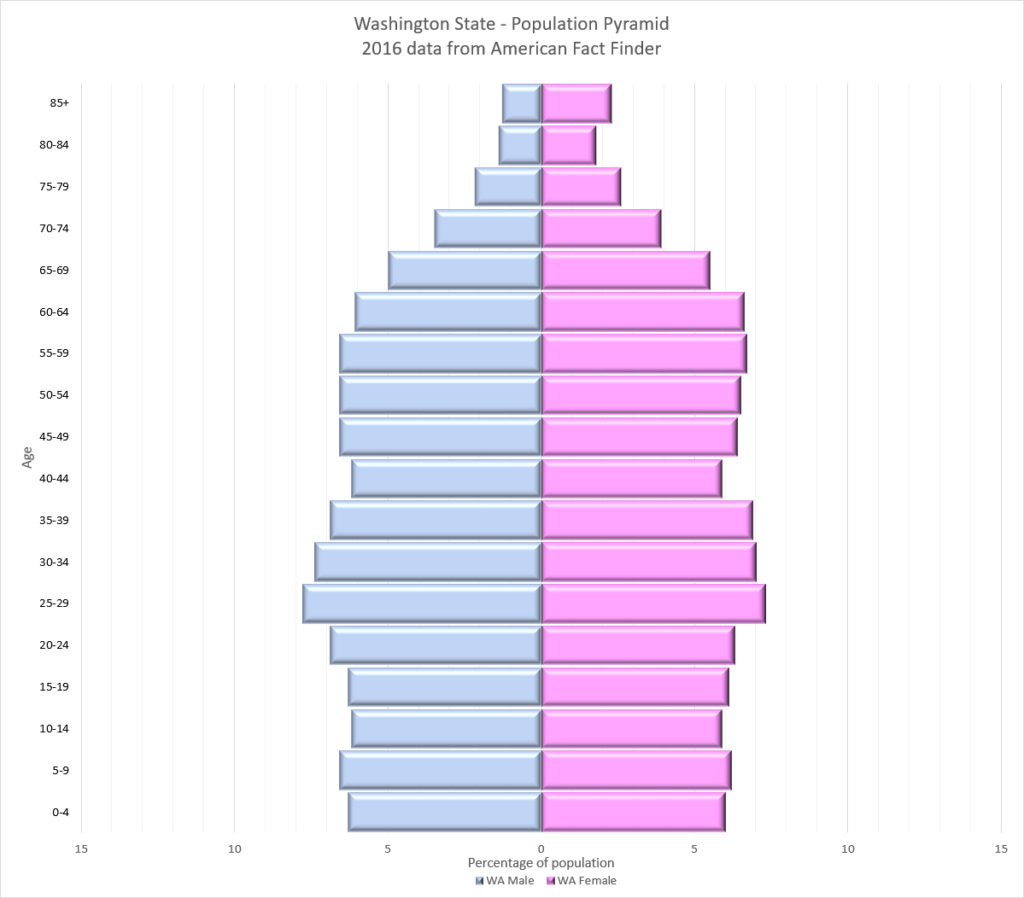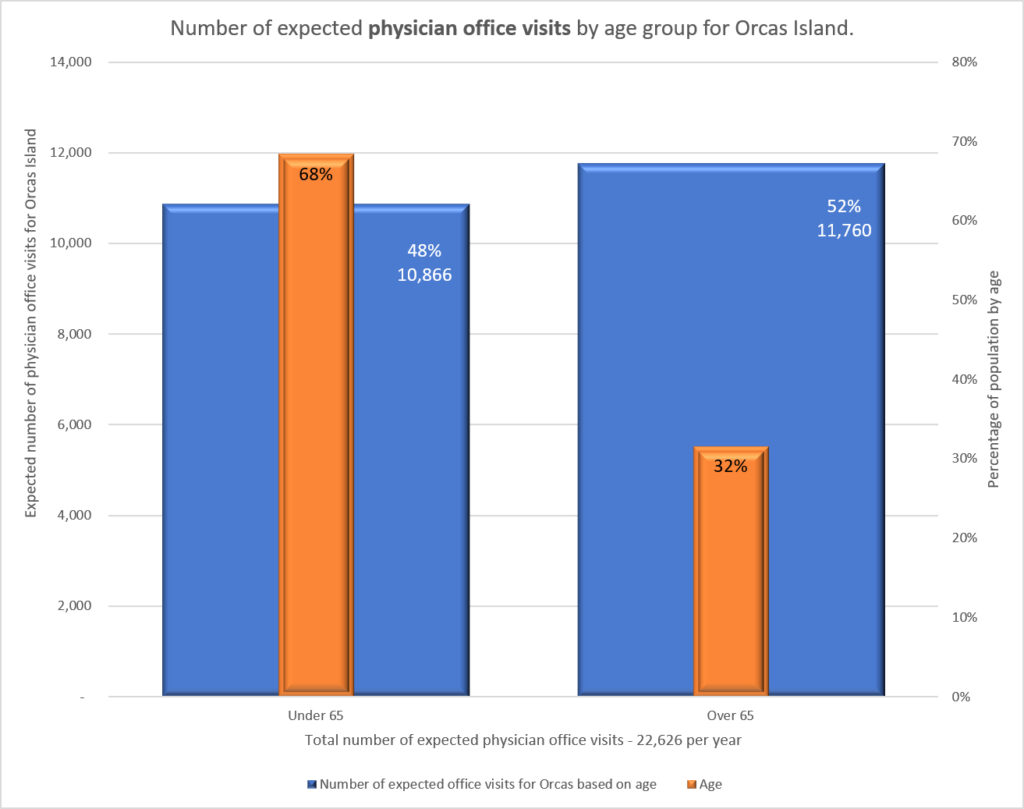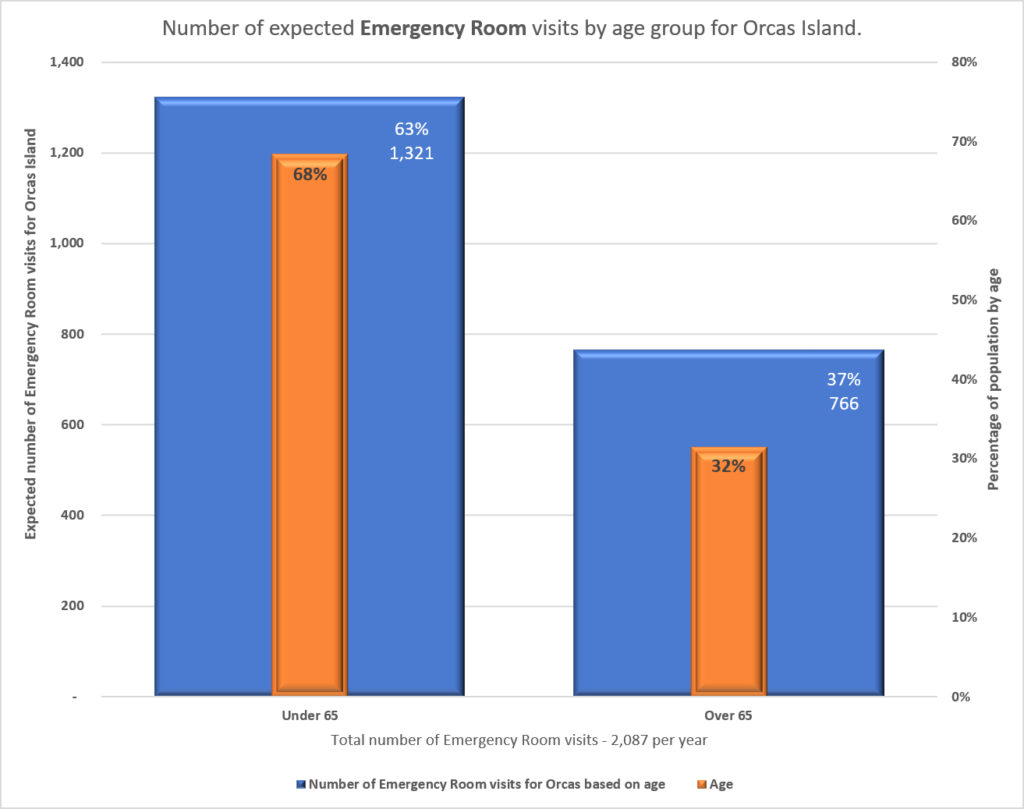How does Orcas Island stack up in population compared to the rest of the State?
One can find the population by census tracts on the American Fact Finder site, which is a division of the US Census Bureau. These pyramids show the population estimates for 2016. As usual, click on the image to see it in larger size and higher resolution.
The third image is a merger of the state and island populations onto one pyramid for easier comparison.
Young people are not on Orcas Island as much as they are in the rest of the State. Another way of saying the same thing is that we have a much older population than the State average. This is something we all know. We are just showing it graphically.
Now, to put that into context of health care requirements. We looked at the Health Services Utilization by Age Group by the National Academy of Sciences. We found it on the National Institutes of Health, a government site. They report the number of visits to a doctor or a hospital, based on the age of the individual. It is given as a number of visits per 100 population. Knowing the population by age of Orcas, we can estimate the number of visits to a doctor that Orcas residents might make.
This is taken from the Health Status and Health Care Service Utilization chapter.
On average, older adults visit physicians’ offices twice as often as do people under 65, the older adults averaging 7 office visits each year. Older adults are more likely to visit a physician’s office for a chronic problem or for a pre- or post-surgery visit, but they are less likely than younger persons to seek preventive care. Older adults frequently made visits to internal and family-medicine physicians, but more than half of their visits were to specialists (NCHS, 2007). Older adults also tend to visit multiple physicians. In 2003, half of Medicare patients visited between two and five different physicians; 21 percent visited six to nine physicians; and, 12 percent visited ten or more different physicians (MedPAC, 2006).
The orange bars in the following graphs show the percentage of the population by age group. 68% of the Orcas Island population is under the age of 65. That leaves 32% that are over the age of 65. Those over the age of 65 make about 52% of all physician office visits, even though they are a minority of the population. The older the population is that we have on Orcas means there is a greater need for medical services than an equal-sized but younger population. The larger the gap between the top of the orange bar and the top of the blue bar indicates a disproportionate demand on services. As can be seen in the following graphs, those over 65 visit the doctor more, have more injuries, and stay in the hospital longer.
Click on the images to see them larger and in higher resolution.
Not all of these visits will be to island clinics. Many utilize the services of specialists that require a visit to the mainland.
From the same report as cited above. Retooling for an Aging America: Building the Health Care Workforce. There is a lot more there but we are highlighting the paragraph.
Older adults account for a disproportionate share of emergency services. In fact, the rate of use of emergency medical services (EMS) by older adults is more than four times that of younger patients, and older adults account for 38 percent of all EMS responses (Shah et al., 2007). Between 1993 and 2003 ED visits by patients between the ages of 65 and 74 in creased by 34 percent, and adults over age 65 had the greatest increase in visit rate of all age groups (Roberts et al., 2008). In 2004 older adults made 14 percent of all ED visits. More than one-third of older adult ED patients arrived by ambulance, using ambulance transport at more than double the rate of ED patients as a whole (McCaig and Nawar, 2006).
One reason we may have a limited number of health insurance companies to choose from is that we have an older population combined with a high cost of off-island medical transportation. Every off-island emergency transport is expensive for both the insurer and those buying insurance.
If Orcas Island had an age distribution that matched that of the rest of the State, the demand on Orcas Island for medical care would be much less.
The percentage of the population of the age of 65 is 12% for the State of Washington. On Orcas the percentage of the population over the age of 65 is 32%.








